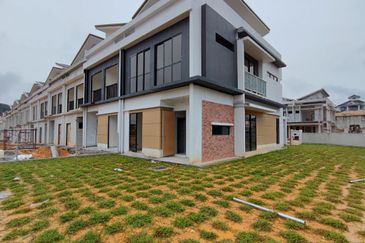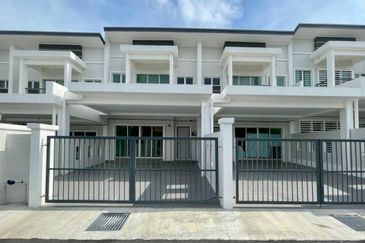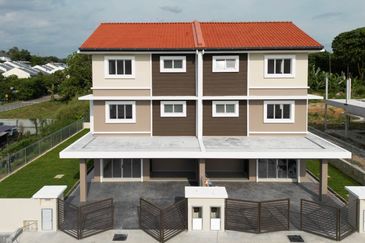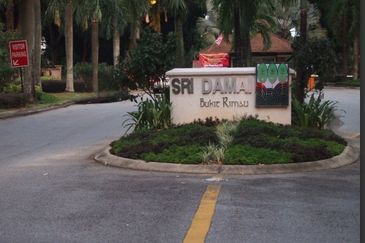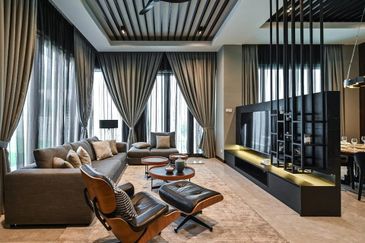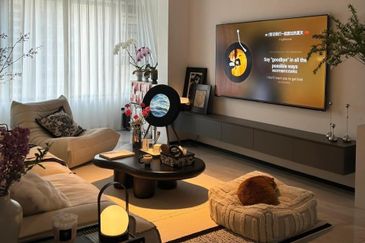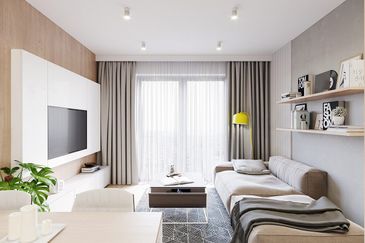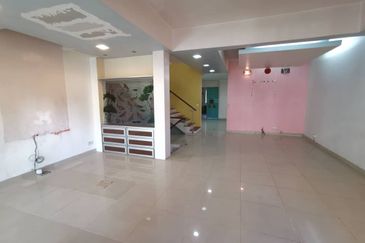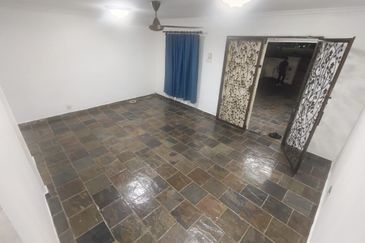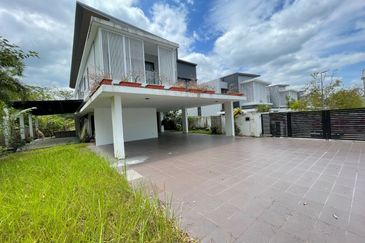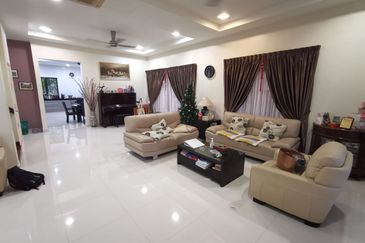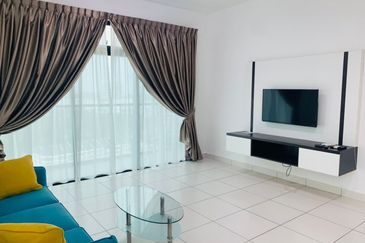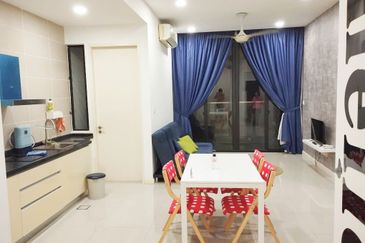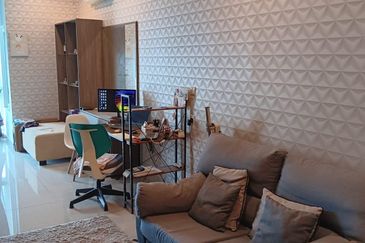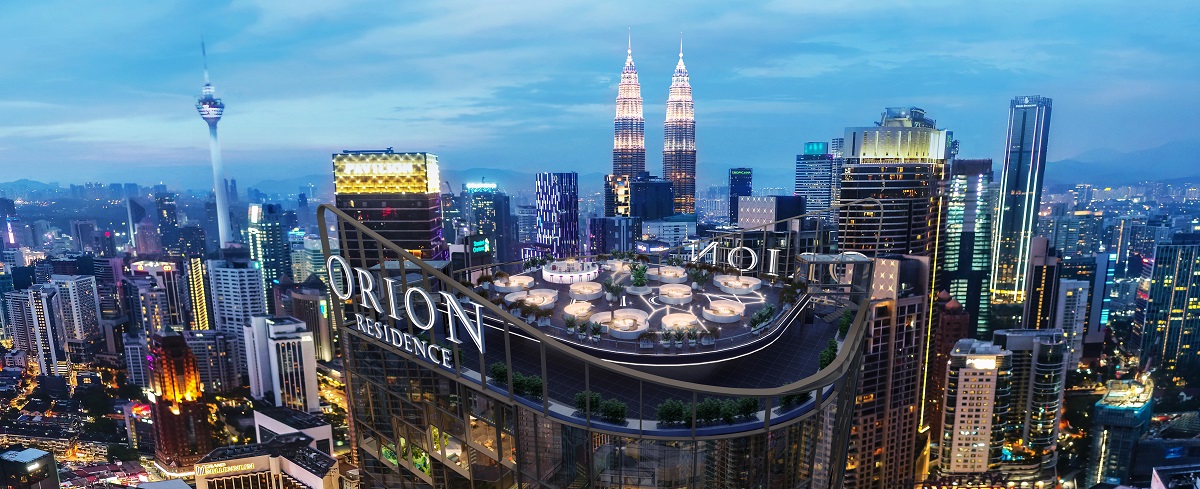As the speakers at The Edge Investment Forum on Real Estate 2011, themed “Buy, sell or hold?”, were unable to take all the questions from the floor, participants were invited to send in any questions they might have for the respective speakers. The replies from these experts are published below.
CHRIS BOYD
What is the Klang Valley doing right in the property market that can be transferred to other parts of the country?
The Klang Valley has seen and will continue to see a vast amount of new infrastructure in the form of highways, improved bridges, power and water and, shortly, new rail links. These are huge investments but they are essential to new and orderly development. Unfortunately, smaller urban areas often cannot support this type of investment unless they are fortunate enough to be in a development corridor like Iskandar.
You said the top end of the condo market is weak. What is the situation with condos or serviced apartments in the middle range? And are the middle-range condos worth investing in?
In my view, there are some middle-range condos that are well worth investing in. Some points to watch for are good rental value and management, and the possibility of benefiting from the new MRT stations (for example, look at some of the older condos in Section 17 in Petaling Jaya).
Is this a good time to invest in the office market?
Office development has seen strong growth over the past five years but is now facing an oversupply as happens periodically. Major buildings that are fully let out on long leases are still an excellent investment option but generally, individual investors thinking of buying strata office space should be cautious.
What other parts of Malaysia, besides the Klang Valley, have good investment potential? Are Sarawak and Sabah good places to invest in?
It would be difficult to pinpoint all the other promising investment sectors but personally, I like anything resort-related because I believe Malaysia has great long-term tourist potential, and Sabah because property there is inexpensive and has good upside potential. For the long term, I would look at small plots in and around Seremban simply because the market has been ‘soggy’ for a long time and will surely bounce back before long as Greater KL continues its relentless expansion. Think of it as going back in time and buying in Bangsar in the early 70s! I would also look for similar opportunities in southern Johor because the major infrastructure associated with the Iskandar Development Corridor is nearing completion and will have a huge impact.
Should I wait for prices to plateau to enter the property market or I should get into the market now?
If you are planning investments for the long term, that is at least seven years, then I see no harm in getting in now provided you pay reasonable market value. Try to lock in your interest rates for as long as possible.
HO CHIN SOON
What is the upside potential of property prices near the MRT-to-MRT interchanges? Why are they better than the LRT-to-MRT interchanges?
To be honest, nobody can know for sure until after the MRT trains have run for two to three years. Only then can one make comparisons based on actual rents and sales of sites within, say, 300m of an MRT station. However, many excellent studies have been done overseas and some of these have ‘control’ locations to determine the effect before and after the trains start running.
The figures obtained from these studies point to a 25% to 50% increase in capital values and rents when we have properties located within walking distance of, adjacent to or integrated with a MRT station. And why are MRT-to-MRT interchanges better than LRT-to-MRT interchanges? The MRT line can carry much more people than a LRT line. Thus we can safely assume that a MRT-to-MRT interchange would have more human traffic flow. That translates into good retail businesses which means higher rentals and values.
Perhaps we can suggest to our universities to ask the relevant departments (usually urban studies and architecture) to start the research and monitoring of land use patterns, values and the economic impact of the MRT system on Greater KL now so that future generations can benefit academically from this exciting episode in our urban history.
It is ideal to have shophouses or shopoffices near MRT stations. What about residential houses/apartments? Would possible noise bring down the value of residential properties? I know you said if you cannot stand the noise, move and rent out. But that would not be an option if there is no means for a second home.
If you do not have the means for a second home, you can do either of these two things. First, you can sell your property and use that money to buy another property in another location. Or you can rent out your ‘MRT’ home to students and foreigners and use that rental to rent another property elsewhere!
Where are the LRT-to-MRT interchanges and what kind of price appreciation can properties in the area enjoy?
The LRT-to-MRT interchanges can be found in the UOB-sponsored map. If you have difficulty locating them, you might want to ask an officer from the bank or you can drop by our office in Desa Pandan and our people will gladly help you out.
I purchased a shoplot in the secondary market on expectations of a MRT station coming up in the area, and paid a premium for it too. Now it turns out that the station won’t be coming up in the area. What do I do?
I am sorry to say that you can do nothing about this unless you can prove in a court of law that there was ‘misrepresentation’ on the part of the seller. For example, did the seller put down in writing that there will be an MRT station coming up in the area where the shoplot is located?
I heard that the government usually pays above-market rates when acquiring homes for the MRT. What kind of premium can I expect if the government wants to acquire my home?
I would be very interested to find out from whom you heard about land acquisition compensation that is ‘above market rates’. Fair and equitable compensation would be just ‘fair market value’ and I cannot see why the government must pay a premium. I would like to suggest that you consult a practising property valuer to represent you in the land acquisition hearing in the event your house has to be acquired for the MRT lines.
GERARD KHO
For investments aiming for capital growth, would it be safer to invest in shop offices or residential houses?
The potential for capital growth for shopoffices depend on the timing of the acquisition. The typical capital gain averages about 50% if the property was acquired off the plan and sold at completion. If the property is only sold two years after completion, the gain would average about 100%. On average, the property values of shop offices double if held for at least two years after completion and on provison the property is tenanted.
The typical rental yield for shopoffices in the Klang Valley is about 7% at the time of completion. The rental yields drop to about 5% two years after completion. We believe that this reduction is part of the reason why there is an extra 50% gain two years after completion.
Residential property yields are typically lower than 7% at the time of completion, hence, the fundamentals may not be as strong to justify the second wave of capital gains evident in shopoffice investments.
Shopoffices are investments that are very dependent on the vibrancy of businesses in their location. Where an area has opportunities for continued rental increases (for example, Bangsar, because of popular F&B outlets), there is a high likelihood for continued capital gain increases over time. Yields for residential properties in Bangsar completed over the last five years have not increased over the lifecycle of the projects. The fundamentals for growth for residential property may not be as evident as that for shopoffices.
For rental yield, should I invest in shopoffices or residential houses?
If you had the opportunity to purchase a property at launch in the last five years in the Klang Valley, your rental yields could be as high as 10% if benchmarked against the launch purchase price. The yields fall to 7% if you purchased the investment property at a later stage when the property had just been completed. Yields drop further to 5% if the purchase was made two years after the completion of the project. Thus, rental yields depend on when the property was acquired.
Shopoffice rentals have the potential for increase when the businesses in that location are performing well. A similar increase in rentals for residential property was not typically evident in the last five years where, in many instances, a decline in rental figures was the norm.
Mr Chris Boyd expects the residential property market to have a “soft landing” this year. In your opinion, how would the shoplot market perform this year?
Shoplot activity depends largely on consumer and business confidence. Shoplots typically attract retail and/or commercial activity. As long as these two activities are still strong, I see no reason why there should be a soft landing and the growth we saw in the last five years could still persist.
In each market, the scenario for shoplots’ growth is highly dependent on demand and supply. The performance of a shoplot would be area-dependent. Where there is strong commercial activity, activity from the surrounding population in that physical location and no new shoplots coming on line, it is likely that prices would continue to escalate. This is what is happening in Kota Kemuning where the last phase of shoplots has just been completed whereas there are still about 5,000 to 6,000 homes coming on the market that could generate considerable population growth.
It would be ideal to have shophouses or offices near an MRT. What about residential houses/apartments? Would noise from the nearby MRT bring down the value of residential properties? I know Mr Ho Chin Soon said that if one cannot bear the noise, he should move and rent out the property. But that would not be an option if one has no means for a second home.
You need to consider time-cost savings from the convenience of an MRT as opposed to the peace of a quieter neighbourhood. Noise could affect the value of a property. When an area is a desirable location for tenants because of the convenience of an MRT, the rental could increase over time. When the rentals adjust upwards, the increased yields could result in capital gains. This could justify the occupant moving and using the property as a high returns investment or moving and selling it with a capital gain (because of the higher yields). In either case, it could financially justify and provide the means to purchase a second home.
There are more and more neighbourhood shopping malls, which are of similar concept to shops, being developed. Does it still make sense to invest in shops?
Shopping malls have strict standards that have to be adhered to when it comes to the shop’s physical set-up and appearance of the retail space. This is on top of the normally high rental rates per square foot as compared to a shop office space. Some businesses need space for storage accessible to the retail space. In such situations, the shopoffice provides a good alternative.
For example, with the completion of the Sunway Giza shopping mall in Kota Damansara, the adjacent shops continue to experience strong capital appreciation, especially the shops nearer to the Sunway Giza complex. This appreciation is also evident for the four-storey shopoffices that are fronting the Giant hypermarts in Kota Damansara. The Bangsar shoplots adjacent to the Bangsar Village 1 and 2 shopping centres have also seen continued capital appreciation despite the growth in popularity of the adjacent shopping mall. In Klang, the Bukit Tinggi 2 and Bandar Botanic shops facing the hypermarket have also experienced increased activity.
With the emergence of shopping malls, the strategy for investment in shops should be varied. These shops must now be fronting massive centres of activity such as the shopping malls.
Panel discussion on ‘Build-then-sell: The impact on property prices’
DATUK TEO CHIANG KOK
The build-then-sell (BTS) concept is good for housebuyers but not so for most developers, is there no win-win situation?
It is not entirely good for housebuyers as the price premium for BTS is expected to be significant. Be an informed house buyer, research the developer, location and design, and one should able to ferret out the right house to purchase.
There have been many controls that have been implemented, such as the Housing Development Account, where withdrawals from progress payments are related to construction cost expenses, which is managed by the banks. Developers are required to submit regular progress reports to the Housing Ministry and Local Government. These progress reports enable vigilant monitoring, and with effective enforcement, incidence of abandonment can be avoided. The ministry and the Real Estate Housing Developers’ Association are exploring several options to further safeguard housebuyers and ensure the healthy development of the housing industry.
I am looking to buy my first property. If I choose an established developer, the properties are likely to be priced at a premium. If I go for the more affordable houses, I am concerned the property might not turn out as promised, or worse yet, be abandoned. I personally do not feel the interests of housebuyers are well protected in Malaysia. What do you think?
Housing developers are already very stringently regulated. What is more important is diligent monitoring and enforcement by the regulators.
Generally, all three speakers elaborated on the negative implications of BTS during the panel discussion. In other words, we are not ready. Will we ever be? If your company did not get involved in BTS by accident, do you think you would have gone that way?
I tried to give a balanced holistic view of the cost of protection versus the premium that has to be included in the eventual price of the houses. BTS will eventually and automatically become the norm when the backlog of housing needs is met and we are only building for the incremental need of population growth and replacements. The competition then, where production exceeds demand and where buyers have many choices and not rush to buy off the plans, as well as the long sales period through the construction phase, will translate into BTS.
In a regime of low interest rates, if the developer has retained profits which are under-utilised, and where a project is in a captive location and we are confident of selling upon completion — these are circumstances that we would have chosen to adopt BTS. It is said that there is nothing more assuring than to invest in the products you are creating and knowing that the intrinsic value will grow faster than the opportunity cost of internal funds.
I think BTS is great for housebuyers’ peace of mind. I am all for it and I hope the government makes it compulsory as soon as possible. Pay more for something that is aleady available instead of hoping the unit is built the way it is supposed to be and in a timely manner. Don’t you agree?
House buyers are free to choose which mode of purchase — BTS or sell-then-build (STB) — suits their budget and risk appetite. As our nation needs to build large numbers of houses for a burgeoning, young population, the STB system has served us very well despite the 0.5% incidence of abandoned schemes. It is more sensible to seek ways to manage this potential 0.5% default than to impose BTS on 99.5% of the developers that perform. A contraction of development activities will not only severely impact developers but also the economy as a whole as the housing and construction industries contribute a very significant percentage to our nation’s GDP.
If a STB house is RM350,000, how much would the same house cost if BTS is implemented? How will this impact the middle class segment?
Many factors are involved in the pricing of a product. It is quite clear that there will be a very significant contraction in the number of houses that will be built under BTS. Even for consumable goods like chicken, when there is a shortage of supply, price hikes can be upped several folds.
KEVIN LAM
UOB’s Kevin Lam talked of an alternative segmented approach to BTS in which homes can only be marketed after completion of 50% to 60%. I understand China has already adopted this approach. How has this affected the property market there?
Property prices in China have been on a general upward trend in the last few years but this is due to many factors and it would be difficult to isolate the impact of the partial BTS on this market.
SAM TAN
BTS is good for house-buyers but not good for most developers, is there no win-win situation?
The current system of STB is perhaps the win-win situation you are referring to. Buyers get in at the lowest price for maximum capital appreciation while providing the cash flow for the developer to complete the project.
I am looking to buy my first property. If I choose an established developer, the property is likely to be priced at a premium. If I go for a more affordable house, I am nervous that the property might not be as what was promised or, worse yet, abandoned. I personally do not feel the interests of house buyers are well protected in Malaysia. What do you think?
There are reasons why most people are willing to purchase their first property from an established developer. Apart from their reputation, more often, the specifications for their houses are better. It is always important to compare apples to apples, as most homes differ in their specifications and the quality of finishes offered. Most people yearn for better finishes for their homes and are willing to pay the developer to do it, saving them the hassle and cost of renovating later.
All three panellists pointed out the negative implications of the BTS. Does this mean that we are not ready?
The point the panellists have made is that we are not ready now. We have to remember that Malaysia is still a developing economy. Our average incomes are nowhere near those of Singapore’s but we are working our way up to becoming a high-income nation. When we are closer to that goal, and the average income of Malaysians rises, then we will be more ready to brace for the impact caused by this change.
I think BTS is great for the house buyers’ peace of mind. I am all for it and I hope the government makes it compulsory as soon as possible. Pay more for something that is readily available instead of hoping the unit is built the way it is supposed to be and in a timely manner. Don’t you agree?
At the moment, there are already ample units available in the sub-sale market. The risks have been borne by the first purchaser who purchased off-plan and there are many buyers who would prefer to purchase houses they can physically see. This is why there is such a healthy secondary market, which accounted for 88% of all property transactions in 2010. There are also developers who only sell their products upon completion, so that is an available choice as well. Since the options are already available, there is no need to curb the choice for other investors who wish to purchase properties off-plan.
If a STB house is RM350,000, how much would the same house cost if BTS is implemented? How will this impact the middle-class segment?
That is very difficult to quantify as many factors will come into play the moment BTS is implemented. Supply will shrink, the number of developers in the market will shrink and the cost of materials will increase. It will definitely cause house prices to soar as it will turn into a seller’s market. If economic conditions remain favourable, potential investors may remain in a bullish mood and demand might increase. With all these factors, prices will certainly go up and this will push a lot of middle-class segment purchasers off the property ladder.
This article appeared in City & Country, the property pullout of The Edge Malaysia, Issue 854, Apr 18-24, 2011

